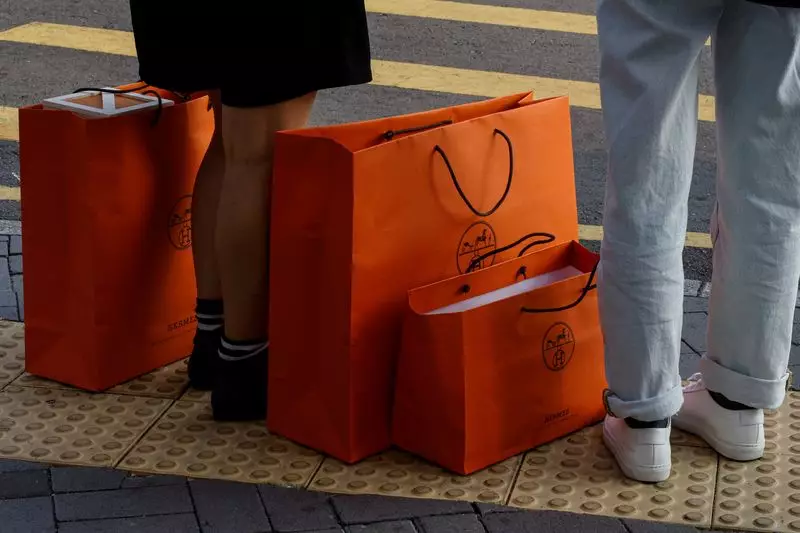Recent shifts in the global economic landscape have triggered a renewed scrutiny of international trade tensions, particularly between the European Union (EU) and China. A report has indicated that European luxury brands, such as Hermes and Dior, may face repercussions from Beijing in response to the EU’s imposition of tariffs on Chinese electric vehicles (EVs). Investor sentiment has wavered, causing significant declines in the stock prices of prominent luxury companies. However, a closer examination reveals that targeting luxury goods may not be in China’s best interest, and the anticipated retaliation may follow a different path.
The imposition of tariffs by the EU on Chinese-made EVs has been perceived as a provocative step that could incite retaliatory measures from the Chinese government. It raises questions not only about the future of these tariffs but also about their potential fallout. Analysts predict that while retaliation is likely, directing it at luxury goods would be counterproductive for China, where the luxury market holds significant value.
According to Patrice Nordey, CEO of Trajectry, the landscape of responses from Beijing will be critical. While an escalation of tensions is anticipated, the specific targeting of luxury products contradicts longstanding favorable regulatory policies that China has extended to both domestic and international luxury brands.
China’s luxury market stands as a colossus in the global economy, expected to account for approximately 25% of the global luxury goods market this year. This considerable market share underscores the stakes for both the EU and China. Any disruption, such as tariffs or increased consumption taxes on luxury imports, would be particularly detrimental to French luxury brands, who heavily rely on this market.
For example, French brandy exports to China totaled a staggering $1.7 billion last year, comprising nearly the entire market for imports of this spirit. The luxury sector as a whole saw European goods worth approximately 11 billion euros ($12 billion) enter China in the past year. This reliance highlights the risks associated with a confrontational approach in trade relations, especially for French companies.
Targeting the luxury sector would not only elicit economic repercussions but would also offer Chinese consumers an incentive to purchase luxury goods overseas. The Chinese government is well aware of this potential outcome; hence, a measured approach to any retaliation is favorable. Analysts like Jacques Roizen emphasize that the Chinese luxury landscape has been carefully cultivated as an avenue for generating tax revenue and fostering local consumption.
Tourism in regions such as Hainan illustrates the Chinese government’s commitment to luxury consumption within its borders. By promoting the development of duty-free shopping, China has demonstrated that it has a vested interest in retaining consumer spending rather than forcing it offshore. The luxury goods industry thrives under this umbrella of supportive policies, making it an uncharacteristic and illogical target for punitive responses.
Economists argue that escalating trade conflicts would not serve either the EU or China’s broader economic goals. Albert Hu, a professor at the China Europe International Business School, aptly points out that both sides appear disinclined to instigate a full-scale trade war, given the mutual economic risks involved. The responses from Beijing thus far seem carefully calibrated, indicating a desire to negotiate rather than escalate tensions.
Moreover, the nature of luxury goods complicates any claims of unfair trade practices. It is challenging for the Chinese authorities to substantiate accusations of dumping luxury products, such as high-end handbags, given their intrinsic value and demand. As noted by Jelena Sokolova, coming up with a credible case for alleged dumping in a premium market setting is inherently difficult.
While fears regarding a retaliatory assault on European luxury goods may stem from recent trade aggressiveness, the underlying economic realities suggest a more nuanced approach is likely. China’s commitment to fostering a robust luxury market aligns with its broader economic strategies, which prioritize local consumption and tax revenue. Therefore, both sides may have much to gain from leveraging dialogue and collaboration rather than descending into further conflict. As the landscape of international trade continues to evolve, the interplay between luxury brands and government policy will remain a critical area to watch.

